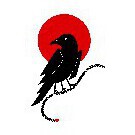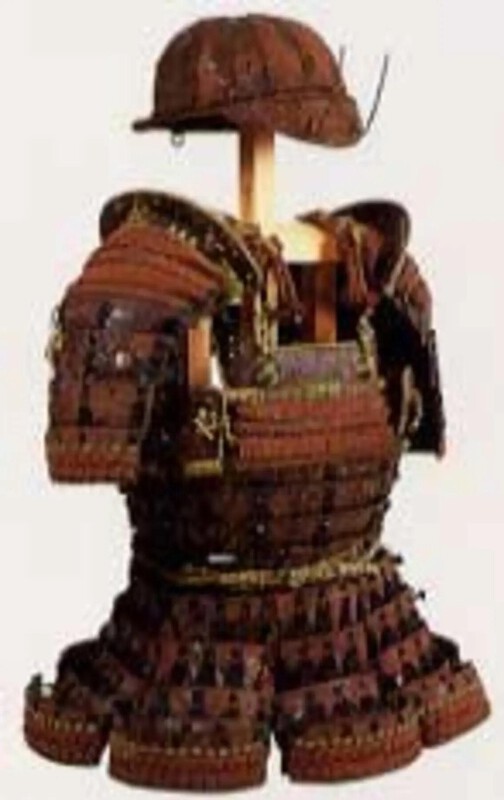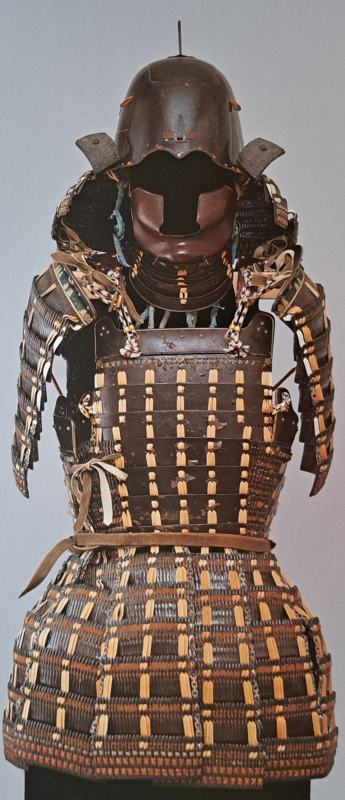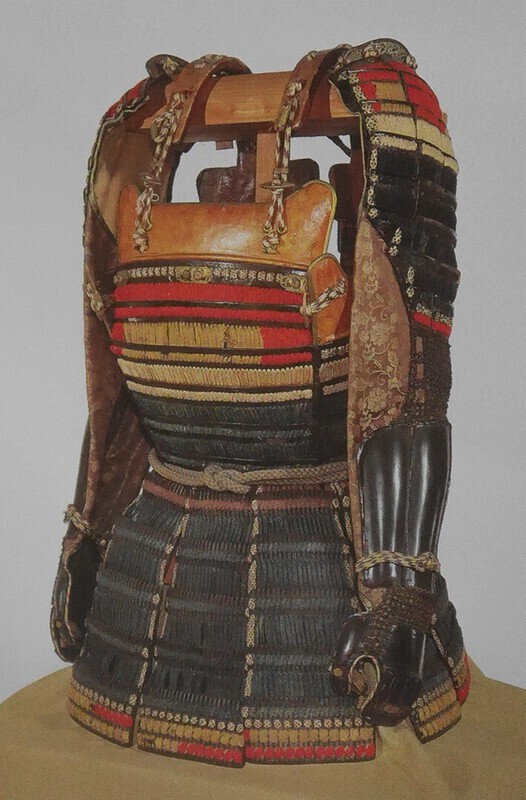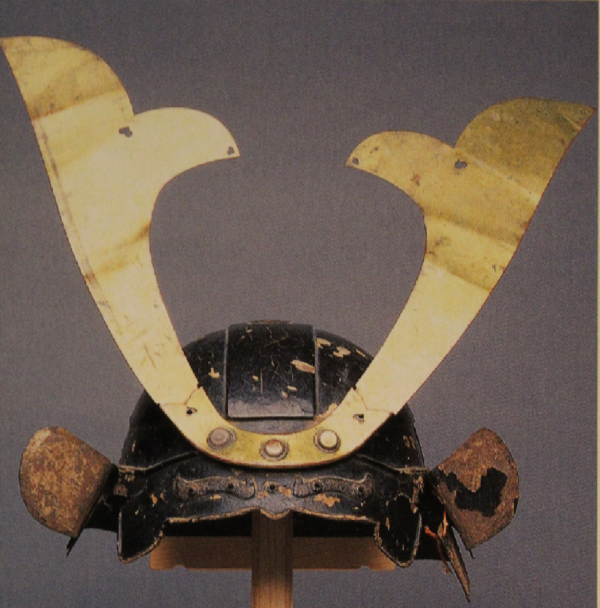-
Posts
124 -
Joined
-
Last visited
-
Days Won
1
Arthur G last won the day on April 28 2023
Arthur G had the most liked content!
Contact Methods
-
Website URL
https://www.facebook.com/saika.armory
Profile Information
-
Gender
Male
-
Location:
Oklahoma, USA
-
Interests
Arms and Armor from Kishuu Pre-1586
Profile Fields
-
Name
Arthur Goetz
Recent Profile Visitors
The recent visitors block is disabled and is not being shown to other users.
Arthur G's Achievements
-
At this point, I can't really see any good reason to ascribe their inception in Eastern Japan. The name "mogami" is a much later attribution, with even an armor order from the Takeda in the early 1570's referring to them as Okegaha-dou. And when we see Eastern styles of dou show up, they immediately go their own direction with it, rivetting the plates together ala Kanto Go-mai, or combining into one large plate as in the Yukinoshita-dou. We also don't see much evidence of Eastern armor production before these show up outside of a few extant kabuto. Yet there is a wealth of Mogami-dou from Western Japan and the Kansai in particular. One of the things I've tried to illustrate with these forum posts is the dangers of using modern terminology that has developed over the last few centuries when trying to study Pre-Edo armor; I think the conundrum here is associating the name Mogami with Mogami Yoshiaki, but like I said, I don't think we actually see this name associated with this type of dou in this era. Further, mogami might also just mean "best", as in the literal meaning of the word. Just food for thought.
-
I think another important armor to discuss here is an example from Shimoichi, Nara prefecture and belonged to the Hirohashi family. This is one of the oldest mogami-dou I have found, likely the earliest with full plates used for the kusazuri and sode I am aware of. The helmet is signed Neo Masanobu (根尾正信) interestingly, and is one of the transitional "Akoda" types I have been researching lately. Sadly, photographs of this armor are scarce, and the quality quite poor. We see a mix of Sugake and Kebiki odoshi, with the lower lames such as the nagagawa being sugake. I will include links here to where these photos were obtained, which contain more information than I'm including here for anyone that would like to dig more! https://www.town.shi...g.jp/0000000027.html So, I'd be curious to hear thoughts on this being a possible origin for the mogami-dou, both in terms of technological evolution as well as location of origin. In essence, my proposition is one of a multi-staged process to get to the full plate mogami-dou, rather than an overnight transition from the kana-dou.
-
Sorry for the long pause on here! Been involved on many other projects, so I put the "zunari" thread on hiatus. I also wanted to do some more research on a few things before proceeding with it. In the meantime though, I wanted to discuss a new proposed origin of the Mogami-dou's development. After some discussions with Luca (Gunsen History) on the evolution of plate based dou in the East, I started to think more and more that the Mogami-dou did not originate in the East. So then, if not in the East, then where? The best candidate is undoubtedly Yamato province, in and around Nara. What would this evolution have looked like though? Was it a straight jump from earlier kana-dou to full plate, or something more gradual? When looking at Inaba Yoshimichi's armor originally, I had interpreted it as a Mogami-dou using kozane for the sides, kusazuri, etc. However, let's take the opposite approach for a moment; what if this is instead a kozane-dou that replaces the most important sections with plate? When looking at the trends with mixing metal kozane with leather, we can see which areas were deemed most important. This armor seems to roughly follow the same logic with plate location as the older thinking with metal kozane usage. Assuming for a moment that this is in essence the earliest form of the "mogami-dou" transition, then it would follow a logical process of evolution from this point. Next stage is completely replacing the kozane in the nagagawa with plate; following this, we would start seeing kusazuri and sode gradually becoming plate based as well, such as in this example from Oyamazumi-jinja:
-
Great to see you on here Luca! Highly recommend everyone give this one a read, I think it'll be a real joy. There's a lot in here to take in, and some things really floored me that I hadn't seen before. For example, who knew that the Hojo were more serious in their implementation of shock cavalry than even the Takeda were?
-
At the end of the day, all of us are experimenting and trying to piece together what it was these guys were doing. One of my big goals is to be the first armorer to revive the laminated sheet technology. I got ahold of Sakakibara Kozan's writings on the topic, as well as some metallurgical analyses of some examples. Fingers crossed I can bring it back into the modern era. I don't think anyone has done it since Late Edo... And that's assuming Kozan's writings were not just speculation but actual implementation. I advise everyone to take the metallurgical aspects seriously, but also to experiment. I think it's the least understood and appreciated part of the art!
-
I like your definition of "iron" a lot. One thing I've gotten very tired of in most discourse on armor metallurgy is people using the term "iron" without any kind of definition because it sounds cool. What complicates the matter is the poor translations of Japanese terminology into English, with tetsu being translated in a very literal sense as "Iron". When we look at the historical usage of the term, it's often a very vague catch-all term for a ferrous metal. If we are talking about Late Muromachi and Momoyama period armor, you'll find a lot of it is truly steel, or laminates of mid-high carbon steel with low-mid carbon on the inside of the plate. It also must be mentioned that plates are hardened through cold working. This isn't a true industry secret, but not many seem to know about it. Most armor you see nowadays is just roughed out into shape with a mallet and forced together either by bad riveting or welding. The way it's really done involves thousands and thousands of small hammer blows working it into shape. Ideally, it should fit together on its own before riveting so as not to have uneven tension in parts causing stress on rivets. Needless to say, this is a lot of work... One other culture that uses this method were the Tibetan Armorers who also cold hardened their plates. In essence, you harden it as you shape it. Generally speaking, there isn't just one standard type of iron/steel with Japanese armor. There is a huge, huge variety of different things that have been used over time. It depends on region, group/school, era, etc. And even within those classifications there is considerable variation. That's why we need to get very specific. People want easy answers where there are none in essence. Another thing that is extremely important to factor is plate thickness. Focusing on Kofun era helmets, the main plate of the Shokaku is generally 1.5-2mm thick with the rest varying depending on the part. The bands for example tend to be thicker with the plates making up the body which appear to be somewhere around 1-1.2mm. Always, always avoid wide sweeping statements with Japanese armor, or looking for easy answers. Always pick a specific example, and copy it to the best of your abilities. When people try and pick something "general" it always leads to problems.
-
At the end of the case studies for this section, it might be a good idea to open this thread up to some discussion and include those in it! There are also the Shii-nomi/Toppai often associated with the Chosokabe that would be worth discussing in that context I think. Shikoku seems to have a very old armoring tradition judging by the development of Iyo-zane, and I don't think nearly enough study or attention has been put into it all.
-
Cont. The overall profile is gentle in nature. The "egg" shape is somewhat less drastic than what we see on helmets such as the Kongo-ji Saika-bachi. The widest point of the bowl also seems to be at the mid point, rather than one third of the way up from the back. The central plate is also rather narrow. We can more clearly see the tomogane tehen kanamono here. Viewing it from the inside, we can see it is attached using three rivets. This smith did not recess his rivets in side but rather left a pronounced tail: If you hadn't guessed yet, this is indeed the same smith as Case Study 1. The kanji given in the publication I drew this from is slightly different however. 土州住人北原宜保作 There are a variety of readings for this given name if this is indeed the correct interpretation: Giho, Gibo, Senho and Takayasu. Personally I'd lean more towards Takayasu, but I'll leave this up to those better versed in this area of study.
-
Tosa Case Study 2 In terms of contruction, this well-known example differs very little from the previous example. Rather than be repetitive, I will note some differences. The thickness of the top plates is rather extreme, appearing to be possibly 2mm in thickness. Judging by the the tomogane tehen kanamono as well as the chips in the urushi layers, this is not simply a product of thick sabi-urushi, but genuine plate thickness. The side plates however appear to be of a more standard 1mm thickness. The edges of various plates such as the koshimaki and mabisashi have been built up however with urushi. In regards to the mabisashi in terms of shape, there is no appreciable difference between this and the previous example. It's quite clear they were made using the same pattern. There are kirigane present in the form of eyebrows, which are attached with za-byo nearly identical as to that seen on the Masashige Okitenugui, having kiku-za and spike rivets. The size ratio is different however, and there are only two present on each rather than three. Hibiki-no-ana are clearly present, but there appear to be no signs of it ever having had shiten-no-byo. Looking at the koshimaki, it's clear it has been modified at least once from its original form. It was originally splayed out and much wider. Judging by the position of the holes, I would safely say that it had the same type of shikoro as seen in Case Study 1. What it was replaced with is quite odd, and seen on many of the extant Tosa-bachi. I'm reluctant to comment however on the design of the replacement shikoro due to both the deterioration in many of the examples and the lack of similar designs in other regions to set a precedent. I'll let the reader make his or her own judgments. The mounting hardware for the kuwagata have been moved up higher this time, with the center of the original location being taken up with a za-byo. I think it's quite possible this example was originally made like the Case Study 1, with the holes later being filled in with rivets and covered over with kirigane during a refit. This is entirely speculative however. The Kuwagata maedate seems to be standard when looking at Tosa-bachi. This is somewhat simplified from Case Study 1's, lacking a central element.
-
Before people get too carried away here, here is some actual data on Kofun stuff. Here's an analysis of the metallurgy in one example, showing the presence of ferrite. Experimental Archeology Recreating Iron/Steel using recreated Kofun-period methods: https://www.pref.hir...imin/tenji-tetu.html 東アジアにおける武器・武具の比較研究 - Comparative Study of Weapons and Armor in East Asia (This one includes illustrations of many surviving examples, showing every major variation and in most cases includes a size scale) https://repository.n...767/1/BA87922583.pdf 弥生時代と古墳時代の軍事組織と社会 - Military organizations and society in the Yayoi and Kofun periods https://ir.soken.ac.jp/record/5475/files/A1859本文.pdf 小札鋲留衝角付冑の変遷と その意義 - Transitions in Kozane Byodome Shokaku-tsuki Helmets and Their Significance https://rekihaku.rep...kyuhokoku_173_07.pdf 埼玉将軍山古墳出土の馬冑 - Horse helmet excavated from Saitama Shogunyama Kofun https://sakitama-mus...616d6b2?frame_id=313 一京都府木津町瓦谷古墳出土の - Excavations from Kawaradani Kofun, Kizu-cho, Kyoto Prefecture http://www.jssscp.or...numbers/vol27_3s.pdf 古墳時代における軍事組織について - The Archaeological Analysis of Military Organization in the Kofun Period https://rekihaku.rep...kyuhokoku_110_09.pdf If you need anything else, please let me know.
-
Cont. It's worth noting this is nearly identical to the construction of a particular "Akoda" at Horyu-ji. The mabisashi is an itneresting transitional shape, being in between the earliest Hitaigane-nari mabisashi and later integrated designs as noted earlier in the mabisashi section of this thread. There is also a notable and very well executed fukurin going around the entire edge of it. The overall shape is gentle and rounded, but still includes extended cheeks and a nasal. In essence it's a simplification of the hitaigane-nari's geometry while keeping the functionality. The maedate is mounted to this mabisashi as we see with nearly all of these. It appears to be attached using wari-byo rather than utilizing a tsu-no-moto. There are four hibiki-no-ana along with shiten-no-byo. The shiten-no-byo appear quite similar to examples like the Masashige Okitenugui, utilizing kiku-za, however the byo itself appears to be a much simpler spike. The front left though does not follow the design of the others, instead utilizing three sturdy byo carved identically to those seen on the Masashige Okitenugui, but using elaborate kirigane five petalled flowers with the petals drilled out. To my eye, they are quite evocative of the kirigane seen on earlier Kumano-uchi work. The finish of this bowl is quite similar also to what we see on the Kongo-ji Saika-bachi and the Masashige Okitenugui once again. I must give credit to my friend Furuta Kazutoyo for first pointing me in the right direction on replicating this. When looking at interpretations of these early bowls, I see authors writing either "Tetsu-sabiji" or "Kuro-urushi-nuri". Well, it's not quite really either... It's a precursor to the later oiled tetsu-sabiji are most familiar with. I have noted a couple of variants. There is a type that relies on a heavy rusting of the bowl which is converted with tannins. Following this, raw urushi is applied onto this, and mixes with loose black rust dust formed after the tannic acid has done its work. This creates a transparent black urushi that is bonded straight onto the plates. Another form seems to be a more conventionally patinated plate with some kind of transparent urushi applied on top. The former is the method that I believe was used on the Masashige Okitenugui; the latter is what I believe we are seeing here on this Tosa example. Another helmet that comes to mind with this same method is this example: When looking at the top view of this Tosa-bachi, we can see there is a tehen present, with what appears to be a simple kanamono made of tomogane. When looking closely at the shikoro, there is a very interesting detail. We can see traces of leather that have survived around the inner room. I speculate there are two possibilities here. Either this shikoro was originally kawazutsumi, or it had a hikimawashi (yak hair wig) going around the base of the bowl. A good argument could be made for either interpretation. Finally, the signature: 土州住北原宣保作 Doshuu-juu (Kitahara Nobuyasu?)-saku I am not quite sure of the pronunciation of the kanji in this case unfortunately, so I chose the reading that seemed the most likely, hence the parentheses. The source I have unfortunately lacks any furigana, but that implies they're not quite sure either. It is especially worth noting that there does not appear to be an upward sweep to the top section of the bowl as seen on the Saika-bachi; if it's there, it's too subtle to see from these photographs. One final interesting feature to note on this example is what appears to be a suji rib on at least the side seams. I think that covers all of the bases with this helmet. If anyone has some info on this particular smith that I have not come across, I would be very happy to see it! Please feel free to interject here. In the next case study, I'll be covering a quite famous example that is very close to this one, but with a few more odd and noteworthy features.


